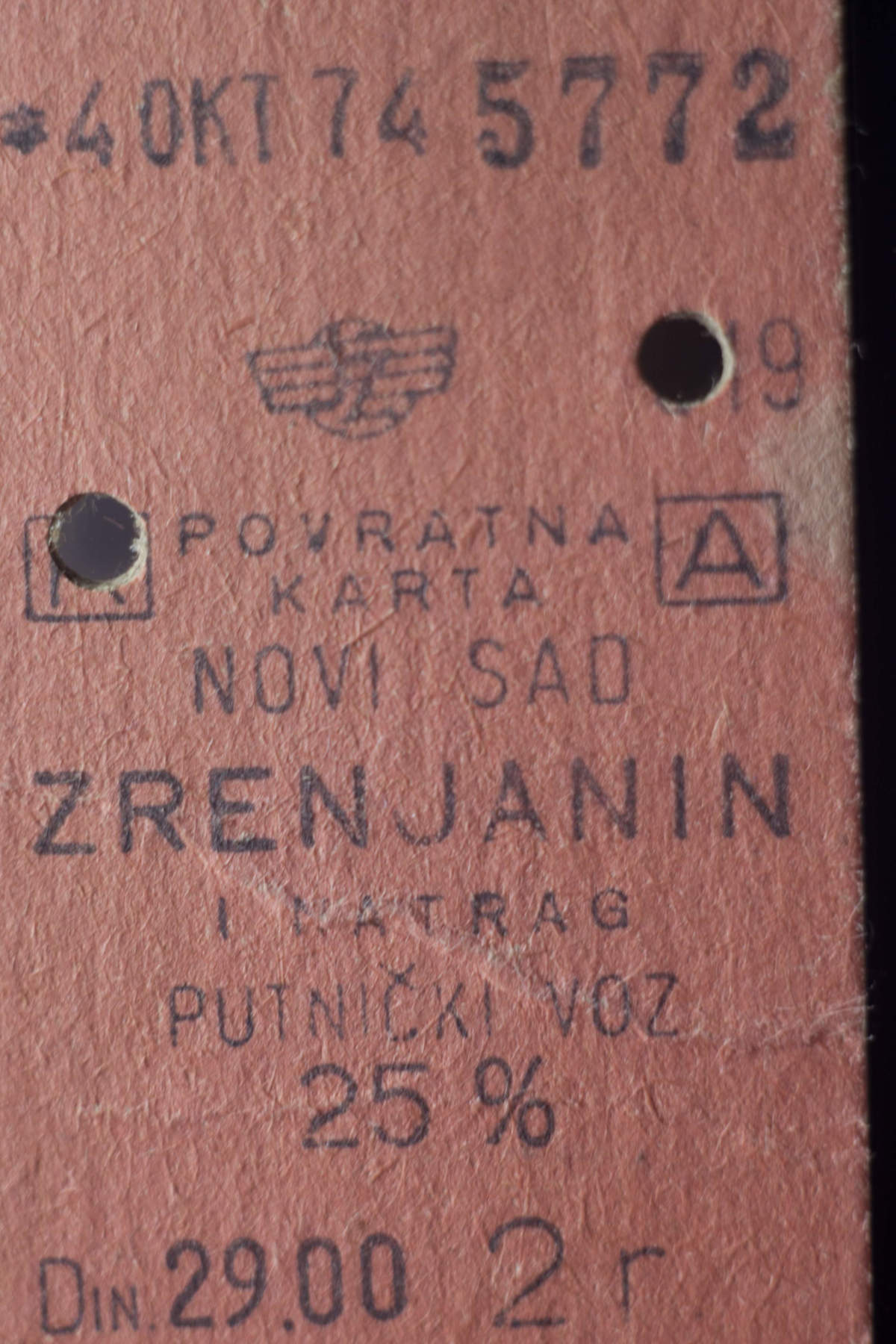04-X-1974.

Thick cardboard, printed on the spot. Few years before only the central stations had such printers, the rest had to have pre-printed tickets.
First day in Novi. On saturday we went with Vanji to move her things into the new place (somewhere close to medical faculty, not in the same compound as the rest of the university, because it had to be next to the hospital), which she'll share with four other girls (she and Đenđi in the basement, other three around the house). Vanji and I found ourselves a room near fish market (and prison), in a ground floor apartment in a four-storey novogradnja. The somewhat old couple have a son, a handsome blonde do-nothing street bum, who's mostly absent, and they themselves have built a double folding bed in the kitchen. I remember I was driving Vanji's dad's škodilak with fake fur lining on the steering wheel, which was popular at the time, and he was navigating, knowing the streets much better than I did.
The next day dad and I drove to move my stuff, the bedding mostly as I didn't need much else. The books I still had none, save for a couple that dad used when he was studying, having passed maths just a couple of years ago. Those were useless to me, just like any maths for engineers, which I soon understood were written as cookbooks: "this is how it's done and don't ask why". Well, I'm studying maths and the why and how is exactly what I need.
We took the train (ticket found among other memorabilia in 2012), actually the šinobus. The šinobus takes two and a half hours from here to Novi, because that's the lay of the railroad. It first goes just a couple kilometers east to the fork to Vršac, then another dozen southeast, where it forks into the southbound track to Pančevo, and the southwest one to Perlez. This fork is where it splits into two trains, and the south wagon is hooked to the one to Pančevo (and, by extension, Belgrade), while passengers from some other train switch to our one if they go west. The wait for this meeting of trains may take about thirty minutes, sometimes just five. Then it crosses the Tisa and goes northwest, bypassing Novi from north and returning to it from northwest - altogether 96km. Straight line would be about 42km.
The bus, however, wasn't much faster, it took 90 minutes, because there was no straight road (until 1977) so it zigzagged around three village routes, pissing at every other lamppost. The famous tavern "Plava laguna" (blue lagoon) is where it didn't stop, that was for truckers, though I wrongly thought it was called so for Autobanda's blue buses. There's nothing blue there, it's at a bottom of an aluvial cliff, which is just plain yellow barren clay. At the tavern, the bus would divert into the Lok village, where it would duly make 180 degrees around the center tree, stop, pick or drop one passenger (never saw more) and then drive back to the inn. The distance the bus went was about half a kilometer.
That's the beauty of socialist democracy. The local self-management of Lok was vocal enough and won the right to have their own bus station. Which meant their ten passengers a day were spared a total of five kilometers' walk. We, OTOH, couldn't have intercity bus stops just anywhere, because we are a city, so the average distance to the bus was about 4km, for the few thousand people a day. Even the makeshift stations near the exits of town were forbidden from time to time, so those from west end would have to ride a bus for 3 km to come to the bus station in the center (aka busodrome, as I named it) to ride an intercity bus west. Then when the new station was built, this became 6km, as it is almost at the south exit.
OK, wait a minute. This is a friday. So perhaps we did all the above on the weekend before, and then took this train to go home for the weekend 4th-7th. Because this ticket was printed in Novi Sad, so it means that on 4th I was already there. The stations here (both main and Fabrika station) didn't have a printer, they had pre-printed tickets, in heavy black letters, almost embossed, and their tickets were on somewat darker cardboard, with a vertical milk-whitish stripe over most of the middle.
Mentions: Đenđi Ujlaki, Fabrika station, Novi Sad, novogradnja, šinobus, škodilak, Vilmoš Baranji (Vanji), in serbian